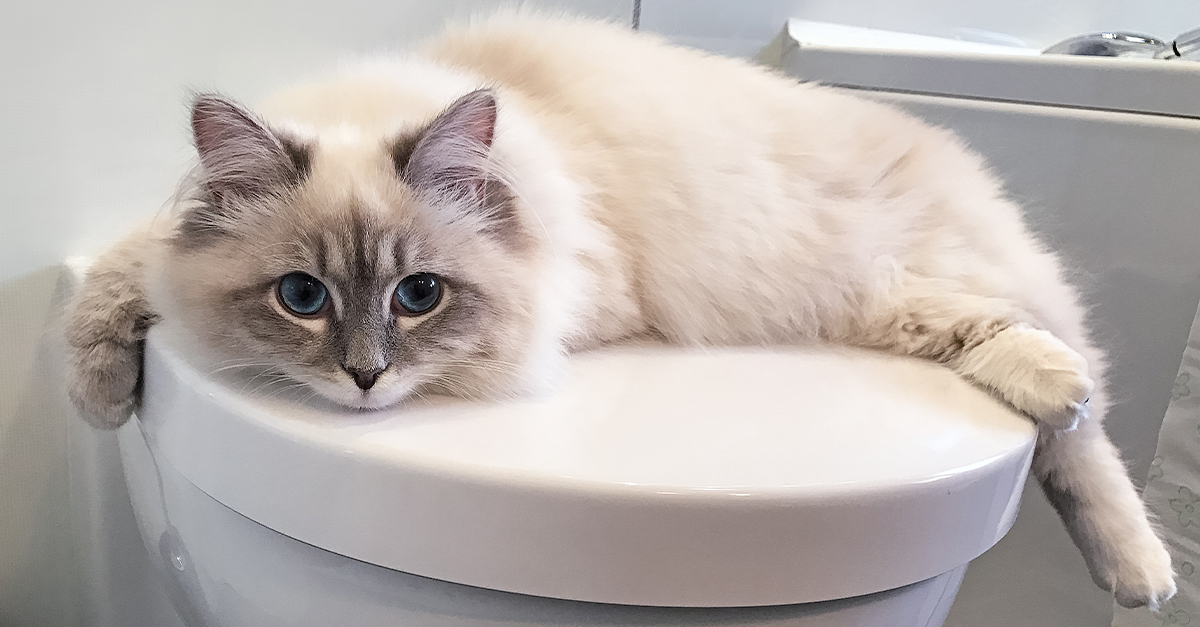Prevent Bathroom Emergencies: Never Flush Cat Poop Down Your Toilet - Expert Guidance
Prevent Bathroom Emergencies: Never Flush Cat Poop Down Your Toilet - Expert Guidance
Blog Article
We have found this great article about Can You Flush Cat Poop Down The Toilet? directly below on the net and decided it made perfect sense to discuss it with you in this article.

Intro
As pet cat proprietors, it's important to bear in mind how we deal with our feline pals' waste. While it may appear hassle-free to flush pet cat poop down the bathroom, this method can have destructive consequences for both the environment and human wellness.
Alternatives to Flushing
The good news is, there are much safer and more responsible means to take care of pet cat poop. Think about the complying with choices:
1. Scoop and Dispose in Trash
One of the most common method of throwing away pet cat poop is to scoop it right into a biodegradable bag and throw it in the trash. Make sure to utilize a specialized clutter inside story and take care of the waste promptly.
2. Usage Biodegradable Litter
Opt for biodegradable cat litter made from materials such as corn or wheat. These litters are environmentally friendly and can be safely dealt with in the trash.
3. Bury in the Yard
If you have a yard, think about burying cat waste in a designated area away from veggie yards and water resources. Make certain to dig deep adequate to stop contamination of groundwater.
4. Set Up a Pet Waste Disposal System
Purchase a family pet waste disposal system specifically designed for pet cat waste. These systems make use of enzymes to break down the waste, minimizing odor and environmental influence.
Wellness Risks
Along with environmental issues, flushing pet cat waste can additionally present health and wellness risks to human beings. Feline feces may contain Toxoplasma gondii, a bloodsucker that can trigger toxoplasmosis-- a potentially severe ailment, particularly for pregnant females and individuals with weakened body immune systems.
Ecological Impact
Flushing pet cat poop presents hazardous microorganisms and parasites right into the water system, positioning a significant threat to water ecosystems. These impurities can negatively impact aquatic life and compromise water top quality.
Final thought
Responsible family pet ownership expands beyond giving food and shelter-- it also includes proper waste monitoring. By refraining from purging cat poop down the commode and choosing different disposal methods, we can decrease our environmental impact and protect human health and wellness.
Why Can’t I Flush Cat Poop?
It Spreads a Parasite
Cats are frequently infected with a parasite called toxoplasma gondii. The parasite causes an infection called toxoplasmosis. It is usually harmless to cats. The parasite only uses cat poop as a host for its eggs. Otherwise, the cat’s immune system usually keeps the infection at low enough levels to maintain its own health. But it does not stop the develop of eggs. These eggs are tiny and surprisingly tough. They may survive for a year before they begin to grow. But that’s the problem.
Our wastewater system is not designed to deal with toxoplasmosis eggs. Instead, most eggs will flush from your toilet into sewers and wastewater management plants. After the sewage is treated for many other harmful things in it, it is typically released into local rivers, lakes, or oceans. Here, the toxoplasmosis eggs can find new hosts, including starfish, crabs, otters, and many other wildlife. For many, this is a significant risk to their health. Toxoplasmosis can also end up infecting water sources that are important for agriculture, which means our deer, pigs, and sheep can get infected too.
Is There Risk to Humans?
There can be a risk to human life from flushing cat poop down the toilet. If you do so, the parasites from your cat’s poop can end up in shellfish, game animals, or livestock. If this meat is then served raw or undercooked, the people who eat it can get sick.
In fact, according to the CDC, 40 million people in the United States are infected with toxoplasma gondii. They get it from exposure to infected seafood, or from some kind of cat poop contamination, like drinking from a stream that is contaminated or touching anything that has come into contact with cat poop. That includes just cleaning a cat litter box.
Most people who get infected with these parasites will not develop any symptoms. However, for pregnant women or for those with compromised immune systems, the parasite can cause severe health problems.
How to Handle Cat Poop
The best way to handle cat poop is actually to clean the box more often. The eggs that the parasite sheds will not become active until one to five days after the cat poops. That means that if you clean daily, you’re much less likely to come into direct contact with infectious eggs.
That said, always dispose of cat poop in the garbage and not down the toilet. Wash your hands before and after you clean the litter box, and bring the bag of poop right outside to your garbage bins.
https://trenchlesssolutionsusa.com/why-cant-i-flush-cat-poop/

We were shown that report about How to Dispose of Cat Poop and Litter Without Plastic Bags through an associate on our other domain. Kindly take the time to share this blog posting if you appreciated it. I enjoy reading our article about How to Dispose of Cat Poop and Litter Without Plastic Bags.
Free Quote Report this page